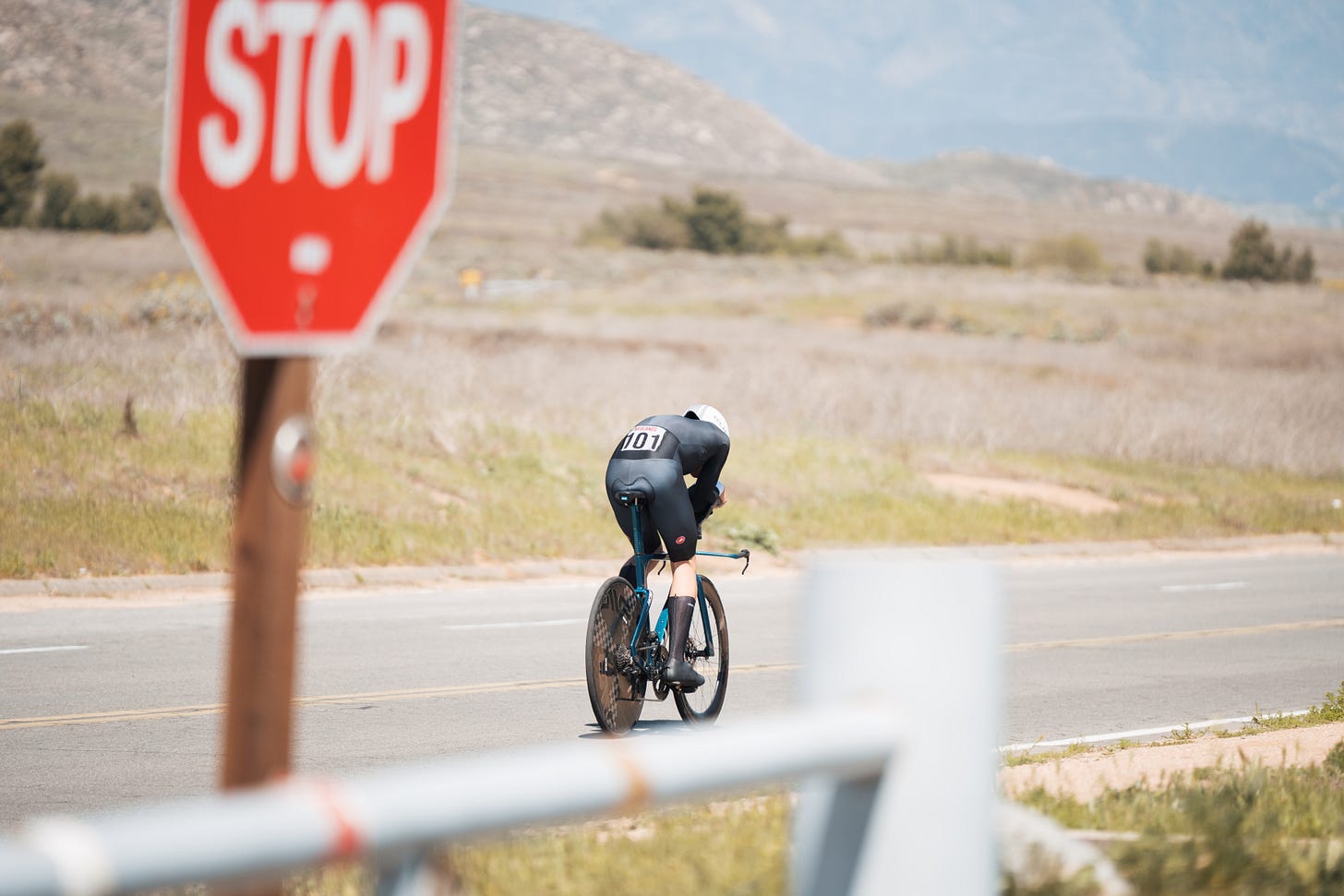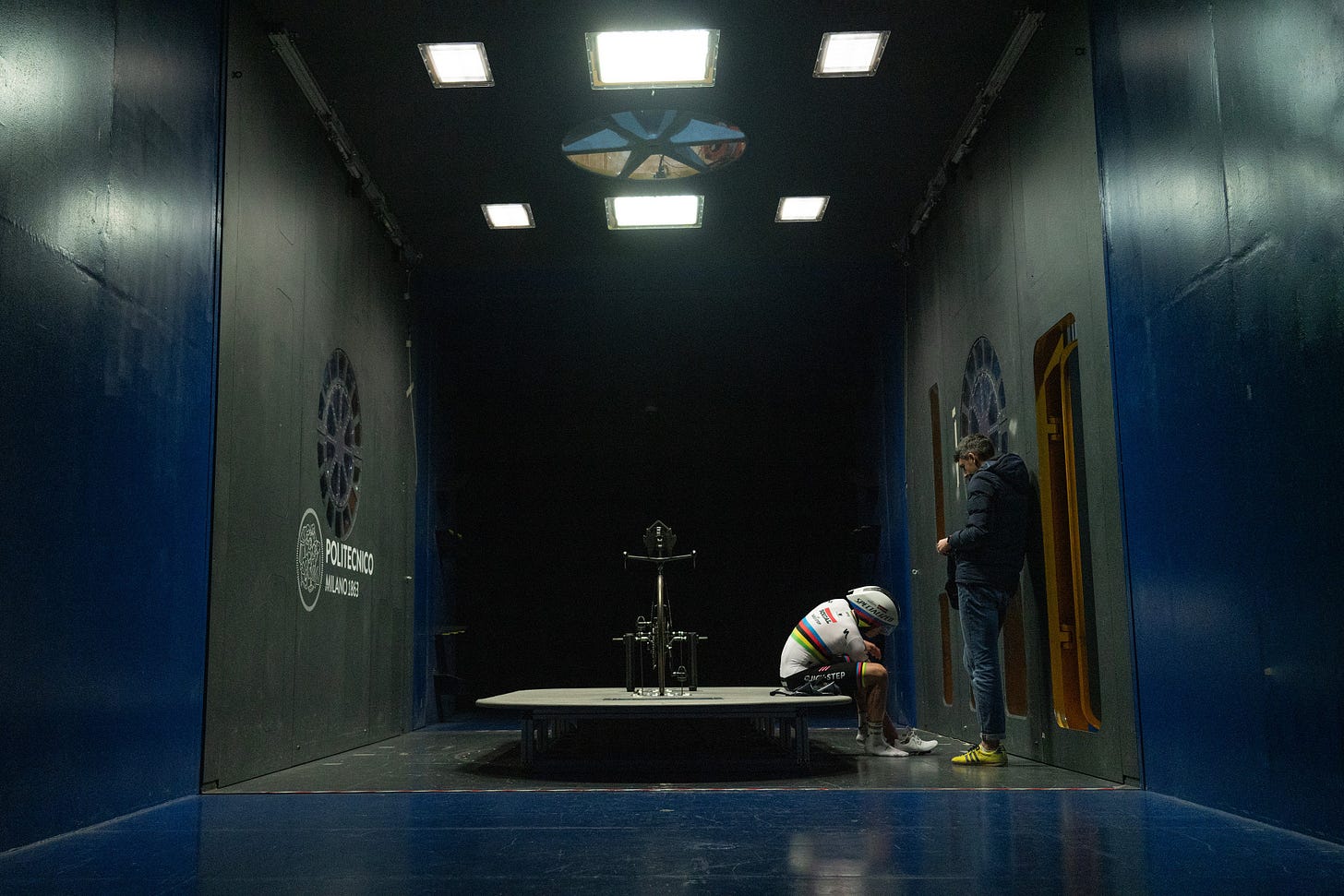The Dark Art of Aero: How Castelli Preps for the Giro TT
It’s Stage 10 of the Giro today, TT day. I’ll be honest, I’ve hardly caught a single live kilometre of the race. A mixture of a lot of training, and it becoming ever more difficult to stream live bike racing…
With today’s stage being a TT, I sat down with my boss at Castelli to talk aerodynamics. This article was written for their newsletter, but I thought I’d share it here too, as many of you, like me, enjoy TT geekery!
Joe
The world of time-trialling and aerodynamics is a dark art.
On Stage 10 of the Giro d’Italia, the riders will tackle a 28.6km course between Lucca and Pisa, this time-trial could decide the outcome of the maglia rosa come the finish line in Rome.
As the kit partner of the Giro, Castelli provides the leaders' classifications with their kit each stage. TT day is unique.
How does the Giro d’Italia TT Stage Work?
Sponsoring a Grand Tour is a challenge, as we don’t know who’s going to be wearing the skinsuit ahead of time. We spend hours upon hours perfecting the composition of the suit for a rider like Remco Evenepoel, but when it comes to a leader's jersey, it isn’t possible to make it fully customisable.
With that in mind, the fabric we are using is slightly more stretchy than our commercial suits to ensure it fits a wide range of pro-cycling body types. The organisers receive two of each size skinsuit - from XS to Large - to ensure the rider in a classification jersey has plenty of options. Why two suits per size? Well, it’s better to be safe than sorry.
In certain cases, such as the 2024 Giro when it was looking likely that Tadej Pogacar would be in pink through to the final stage, there is some pre-fitting and slight custom tailoring that takes place. However, this is rare.
Unlike a road stage of the Giro when the classification leaders are provided with a whole host of accessories, think wet weather gear in their respective jersey colours: a TT is pretty simple, the riders just receive their skinsuits.
The TT Suit

The time-trial suit that the classification riders are wearing is an evolution of the BodyPaint 4.X suit.
The Soudal-Quickstep riders have been testing it since the start of the year and it’s designed to be both faster and simpler.
The introduction of the ‘trip’ fabric from the elbow to the shoulder removes the need for the dual-layer baselayer, and therefore aids thermoregulation.
It’s impossible to share reliable aero data that is worthwhile. Each rider has a slightly different body shape or position, so the data will vary massively. This is why time-trialling is referred to as a ‘dark art’, sometimes, everything that you think you know can turn out to be wrong.
When creating a suit like this evolution of the Body Paint 4.X, our goal is to make it as fast as possible for a wide range of riders. We’ll always do highly customisable suits for riders like Remco, but when providing suits for a whole team, or for a Grand Tour, we want them to be consistently fast.
The latest iteration of the Body Paint is designed to be fast in the 40kph-70kph range.
The Aero Magic
A lot of the magic is in the sleeves. As a general principle, when it comes to surface texture and flow disruption, there’s a fine line. What helps at one speed can hinder at another. At lower speeds, you sometimes need a little help to get the airflow behaving, but push that too far, and it can start working against you once things get faster. It’s all about tuning the balance to suit the demands of the event and rider.
It wasn’t until we tested across lots of riders and speeds that a pattern emerged, and we formed our speed/texture hypothesis. This then got formulated and tested before becoming a rule of thumb that helps guide us where to look.
For the Giro suit, we’ve found what we see as the sweet spot. But it’s not a perfect law of physics, and we’re not going to give all our secrets away in this article. Aero is still very much a dark art.
Castelli Aero Stories
Throughout Castelli’s history we’ve developed some skinsuits for some of cycling’s biggest names.
Take Remco Evenepoel. The Belgian is the reigning World and Olympic TT Champion, and we’ve spent countless hours testing different materials and styles of suits. With Remco, we’ve found that he is faster with a short-sleeved skinsuit - so the whole idea that Remco has ‘fast skin’ is partially true. That being said, the average rider should not copy what Remco does.
If anything, the Belgian is an aerodynamic outlier, he’s far from the rule.
Wind tunnel testing, mannequins, and ‘surrogate’ riders are all used when developing a new time-trial suit.
When Ryder Hesjedal was racing in the Garmin-Sharp era of teams, the 2012 Giro d’Italia had a ‘surrogate’ rider used for a lot of his testing.
We had the job of finding a tall, slender rider with a flat-back TT position. The goal is to do most of the testing with this ‘surrogate’ so the pro-rider can come in at the end and test outcomes, which we already think are fast.
Hesjedal’s 'surrogate' wind tunnel rider was the newly crowned Italian Junior TT Champion - a 17-year-old Filippo Ganna.
One Suit, Many Riders
We don’t know who’s going to be in Maglia Rosa, Ciclamino, Azzurra, or Bianca ahead of time. The logistics for a Grand Tour take place months ahead, and the final skinsuits are delivered to the organisation days before the time-trial takes place.
That means we have to design suits that are race-ready straight out of the bag. They’re fast, but they have to be versatile to fit anyone who earns the right to wear them.
Custom suits like Remco’s are the exception. For the Giro, the challenge is creating something that works for whoever is leading, whatever team they’re from.
It’s equal parts science, preparation, and just a touch of that dark art.
If you want to hear more, here’s a link to a podcast Castelli recently did on Aero.




Really enjoyed reading this!
Do you think it can be an “unfair advantage” if the Maglia Rosa is essentially a Castelli sponsored rider such as Remco?
Enjoyable read